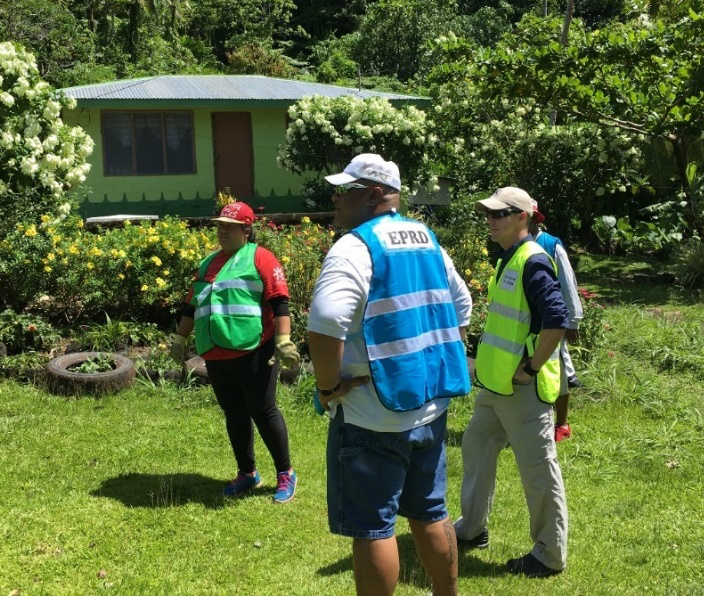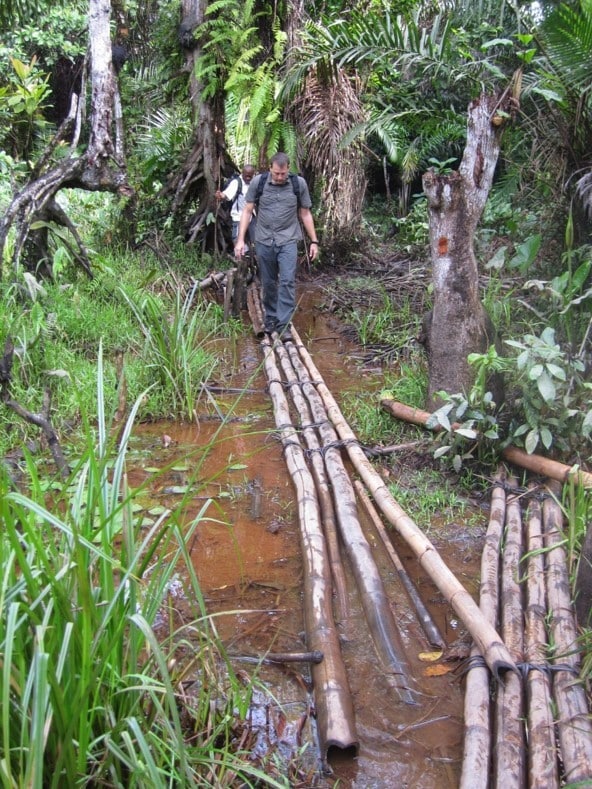CDC Epidemiologists Help Ensure Preparedness
September is National Preparedness Month, and to celebrate, we’re looking at a unique group of CDC employees who work across the United States, using their varied expertise to help the nation prepare for and respond to public health emergencies.
As part of CDC’s mission to build robust preparedness and response capabilities nationwide, CDC assigns expert epidemiologists known as Career Epidemiology Field Officers (CEFOs) to frontline positions in state, local, and territorial health departments. CEFOs, who are funded through CDC’s Public Health Emergency Preparedness cooperative agreement, are seasoned professionals who provide state and local jurisdictions with a direct connection to CDC expertise, resources, and technical assistance. CEFOs identify and fill gaps in preparedness capacity, which improves states’ ability to respond to public health threats.
Developing Workforce
Currently, 31 CEFOs support 30 jurisdictions across the country, and one of their main roles is to develop epidemiological capacity at the state and local level. A major component of this is training and mentoring the next generation of epidemiologists and public health preparedness professionals. Currently, 19 CEFOs directly supervise Epidemic Intelligence Service (EIS) officers, and 10 mentor Council of State and Territorial Epidemiologists (CSTE) fellows. They train state and local preparedness staff on crucial capabilities, including rapid disaster assessments and both basic and advanced epidemiological skills.
“The CEFO program has provided outstanding mentorship for our epidemiology fellows,” said CSTE executive director Jeff Engel. “When I review a host site application from a state or local health department, if a CEFO is the primary or secondary supervisor, I know the fellow will have a great experience.”
CEFOs ensure that the jurisdiction to which they are assigned is more prepared for emergencies, both through applying their own skills and increasing the capacity and skill sets of the workforce at large.
Influencing Policy
Swimmers at local swimming pools across the country are now less at risk of being exposed to toxic levels of chlorine gas, thanks to the efforts of a CEFO in California. In June 2015, the California health department received notification that a chemical release of toxic chlorine gas at a municipal swimming pool sickened 34 people, mostly children. Jason Wilken, PhD, MPH (LCDR, USPHS) a CEFO assigned to California, assembled a multidisciplinary team to investigate the exposure and similar events around the state. Based on these findings, he developed recommendations to prevent future toxic chlorine gas releases at aquatic venues. The findings of this investigation led to a revision of CDC’s Model Aquatic Health Code in 2018 to include new recommendations for keeping swimmers safe from chemical exposures.
Building Capacity
To build epidemiologic and surveillance capacity in the US-affiliated Pacific Islands (USAPI), Thane Hancock, MD, MPH (LCDR, USPHS) a CEFO stationed in Guam who supports the entire Pacific region, organized and leads the USAPI Epidemiology Rounds. These monthly meetings bring together regional epidemiologists and public health staff, including US military personnel, involved in surveillance for emerging infectious diseases. Participants present and discuss relevant topics, share unusual findings, lessons learned, and opportunities for collaboration in surveillance. Past topic areas have included acute flaccid myelitis, Japanese encephalitis, and historical trends in disease outbreaks.
“The [information sharing aspect of the meetings] has been extremely valuable,” Hancock said. “Participants have shared interesting outbreak reports on dengue and rotavirus, an identification of a case of Q-fever, and shared increased burdens of influenza B in multiple jurisdictions. A key issue in the reporting of notifiable diseases was corrected during the first meeting.”
Responding to Emergencies
In addition to preparing for emergencies at the state and local levels, CEFOs are also some of the first responders to emergencies of international concern. In 2014 and 2015, during the largest Ebola outbreak the world has seen, 15 CEFOs deployed to West Africa to help contain the virus. While there, they supported infection prevention and control efforts, conducted clinical trials to determine the safety and efficacy of a vaccine, and implemented a community quarantine system that was extremely effective because it included a video messaging system that kept patients connected to their loved ones.
Back at home, CEFOs supported the domestic Ebola preparedness and response activities of their assigned jurisdictions and CDC. Laura Edison, DVM, MPH (LCDR, USPHS) the CEFO stationed in Georgia, was tasked with helping the state health department track the vast number of travelers from West Africa who were coming through the Hartsfield Jackson International Airport in Atlanta. She created an electronic surveillance system, the Ebola Active Monitoring System (EAMS), within the existing state disease surveillance system, and within six days implemented a fully automated patient tracking system that allowed two epidemiologists to monitor more than 100 patients per day and quickly follow up with those who were beginning to show symptoms.
In 2016, right on the heels of the Ebola outbreak, CDC was dealing with a new threat: Zika virus. The Zika response was novel because of the ever-evolving threats associated with it. For the first time, a disease that was transmitted both sexually and through mosquitos, and that caused devastating birth defects, was threatening the Americas.
Similar to the Ebola outbreak, CEFOs were ready to respond, both abroad and at home. Dana Thomas, MD, MPH (RADM, USPHS) who was assigned to Puerto Rico, was instrumental in confirming the link between Zika virus and Guillain Barre syndrome, while CDC’s regional CEFO, Hancock, led the Zika response in the USAPI. Jay Roth, MPH (CAPT, USPHS), a CEFO stationed in Tennessee, led the first CDC Zika response team in the US Virgin Islands and was later reassigned there to continue Zika response activity. Stateside, CEFOs worked with their jurisdictions to monitor travelers, provide outreach to at-risk communities, and develop pregnancy registries to ensure support to pregnant women who had been diagnosed with Zika.
CEFOs across the country use their experience and unique skills to bolster public health emergency preparedness every day.
“CEFOs provide a crucial link between CDC and state and local health departments, ensuring that preparedness staff, subject matter experts, and state and local partners are all working together to minimize the impact of public health emergencies,” said Christine Kosmos, director of CDC’s Division of State and Local Readiness. “They are one of CDC’s greatest assets both for building preparedness capacity at the state and local level, and for being able to respond swiftly to public health threats when they emerge.”

CEFO Thane Hancock and public healthofficials accessing mosquito habitat during the 2016 Zika response.

CEFO Jay Roth ensures infection control and surveillance activities are maintained in remote areas of Liberia during the 2014 Ebola response.